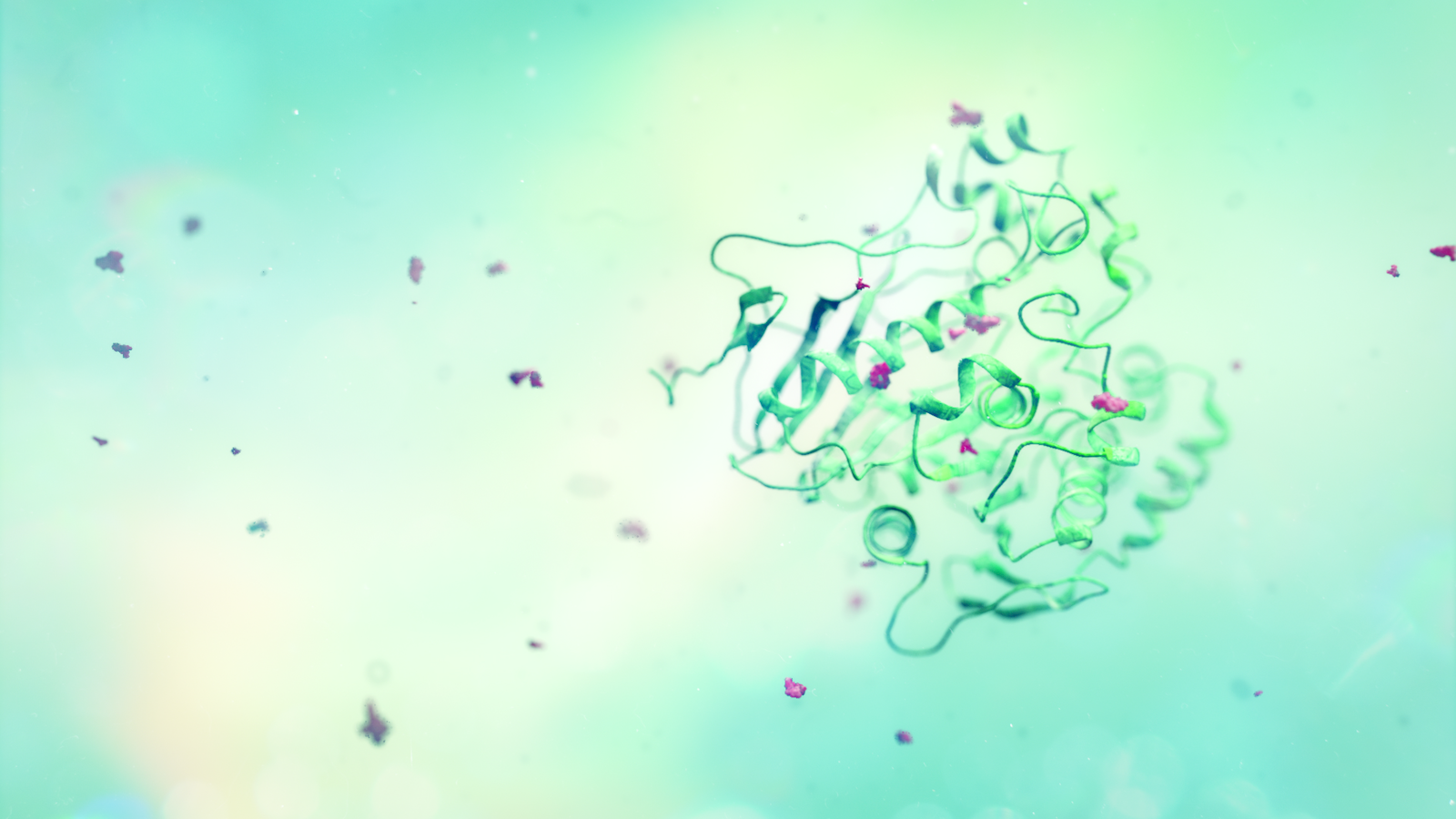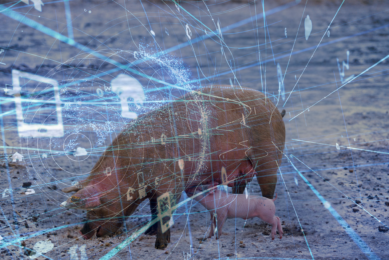A new generation mycotoxin solution

Mycotoxins cost the global animal husbandry industry billions of dollars in losses each year. An effective solution to cut these losses is therefore pivotal. A mycotoxin deactivating feed additive that has a 3-fold approach does just that.
A recent poll shows that 60% of feed and livestock producers in 89 countries have encountered a problem with mycotoxins in the past 12 months, and a further 18% suspected mycotoxins to be at the root of production issues. In addition, results of the latest Biomin Mycotoxin Survey indicate that finished feed and raw commodities frequently contain harmful mycotoxins at levels that pose a known threat to animal health and performance. As Figure 1 shows, deoxynivalenol (DON), fumonisins (FUM) and zearalenone (ZEN) were the most frequently occurring mycotoxins found in samples, followed by aflatoxin (Afla), T-2 Toxin (T-2) and ochratoxin A (OTA) depending on the type of raw material. Fumonisins were identified in 3 out of 4 corn samples tested, and in half of cases concentrations exceeded known risk thresholds. In finished feed, fumonisins were identified in more than 70% of samples, and in 30% of those cases the average concentrations exceeded the risk threshold.
Figure 1 – Global prevalence of mycotoxins in animal feed 2015 on the basis of 31492 analysis. Bars indicate percentage of samples testing positive for mycotoxin presence. Dots indicate percentage of samples registering concentrations known to impair animal health or performance.

Co-exposure of mycotoxins
We know from decades of research on mycotoxins that they tend to occur in groups. This phenomenon, known as co-exposure, is not only common, but also poses more risks for animals. According to the 2015 Biomin Mycotoxin Survey, analysed samples contained on average 31 different mycotoxins and metabolites per sample. At farm level, this can cause greater overall harm to animals due to synergistic effects: when mycotoxins occur together the adverse consequences of each mycotoxin (separately, often in a lab) can be amplified.
In light of the variety of mycotoxins that can impair swine health and performance, a multi-pronged approach is therefore needed to protect pigs. Decades of scientific research by Biomin on mycotoxin deactivation has led to a feed additive (Mycofix 5.0, hereafter called ‘mycotoxin deactivator’) that uses 3 modes of action:
- biotransformation,
- adsorption and
- bioprotection, to deliver absolute protection against mycotoxins.
Ursula Hofstetter, director Competence Center Mycotoxins at Biomin explains that the latest version of this mycotoxin deactivator has been updated with 5 new features. “As stated, mycotoxins never come alone. It is therefore important that the mycotoxin product used has several components that act against the broadest range of mycotoxins found. As a new feature, a number of the components in the mycotoxin deactivator work in ways that are both specific (target a single mycotoxin) and irreversible (cannot be undone) through biotransformation. In addition to components in the mycotoxin deactivator that deactivate trichothecenes, zearalenone, ochratoxin A and aflatoxins, a patented purified enzyme* in the product cleaves off the 2 tricarballylic acid side chains of the fumonisin molecules. This hydrolysation renders fumonisins non-toxic, protecting pigs from fumonisin-related respiratory problems such as porcine pulmonary edema, liver damage and weakened immune systems. This fumonisin toxicity can be measured using the biomarker sphinganine/sphingosine ratio (Sa/So ratio), as fumonisin toxicity is based on the structural similarity to the sphingoid bases leading to the inhibition of the biosynthesis of sphingolipids.”
Backed by 3 EU authorisations
European Commission Regulation (EC) No 1831/2003 established the rules governing EU authorisation of additives for use in animal nutrition. Additives fall into various categories and functional groups. ‘Substances for reduction of the contamination of feed by mycotoxins’ are functional group (m) of the category ‘technological feed additives’ (1). Only those authorised by the EU in category/functional group ‘1m’ have the legal basis for official claims regarding mycotoxin deactivation and are subject to scrutiny by the European Food Safety Authority. Mycofix 5.0 contains the only three EU authorised feed additives proven to adsorb harmful mycotoxins or to biotransform mycotoxins into nontoxic metabolites (Regulation No 1016/2013, No 1060/2013 and No 1115/2014). Each ingredient was evaluated in scientific and practical relevant field trials to assure safety and effectiveness.
Enhanced bioprotection
Another new feature is the enhanced bioprotection of the mycotoxin deactivator. Whereas mycotoxins inhibit immune cell growth, weakening animal defences, the bioprotection mix in the product promotes immune cell proliferation, thus ensuring proper liver and immune system function. The effectiveness of this scientifically proven blend of carefully selected plant and algae extracts can be seen in results from a TEER (trans-epithelial electrical resistance) test. This test measures the integrity of cell layers of intestinal epithelial cells. Mycotoxins reduce the electrical resistance in these cells by opening up the cell layer, making it more ‘leaky’ –allowing pathogens to enter the bloodstream more easily. The mycotoxin deactivator reduces leakage, supporting the cell layer and the animal’s intestinal barrier function.
Endotoxins, also known as lipopolysaccharides (LPS), are part of the outer membrane of the cell wall of all Gram-negative bacteria (e.g. E. coli, Salmonella, Shigella, Pseudomonas) that can elicit strong immune responses, weakening animal immune systems and impairing performance. Results show that 0.02% special bentonite used in the latest version of the mycotoxin deactivator adsorbs more than 90% of 500 Endotoxin Units per milliliter. What’s more, the interlayer sheet structure of the bentonite contains enough binding sites to achieve a similar level of binding capacity in the presence of 4000 parts per billion (ppb) of aflatoxin B1 (Figure 2). The bioprotection strategy provides further support.
Tested in the field
Mycotoxins are a serious problem for the livestock industry and Biomin has therefore invested in a fully revamped formulation. It has been optimised in order to boost effectiveness in the field as for example shown in a trial under field conditions with 60 weaned piglets. These animals received a diet naturally contaminated with mycotoxins over 56 days (Table 1). At the end of the trial, piglets supplied with 1 kg of the mycotoxin deactivator had a final weight of 32.3 kg versus 30.6 kg for the control group. An economic calculation based on the weight difference between the 2 groups clearly showed the overall benefit of the optimised mycotoxin deactivator with an ROI of 7.42 (the feed and piglet live weight prices are based on the average European price for June 2015). The 5th generation of Mycofix has scientifically proven its capability to offer absolute protection against mycotoxins.
* FUMzyme
Backed by 3 EU authorisations
European Commission Regulation (EC) No 1831/2003 established the rules governing EU authorisation of additives for use in animal nutrition. Additives fall into various categories and functional groups. ‘Substances for reduction of the contamination of feed by mycotoxins’ are functional group (m) of the category ‘technological feed additives’ (1). Only those authorised by the EU in category/functional group ‘1m’ have the legal basis for official claims regarding mycotoxin deactivation and are subject to scrutiny by the European Food Safety Authority. Mycofix 5.0 contains the only three EU authorised feed additives proven to adsorb harmful mycotoxins or to biotransform mycotoxins into nontoxic metabolites (Regulation No 1016/2013, No 1060/2013 and No 1115/2014). Each ingredient was evaluated in scientific and practical relevant field trials to assure safety and effectiveness.











